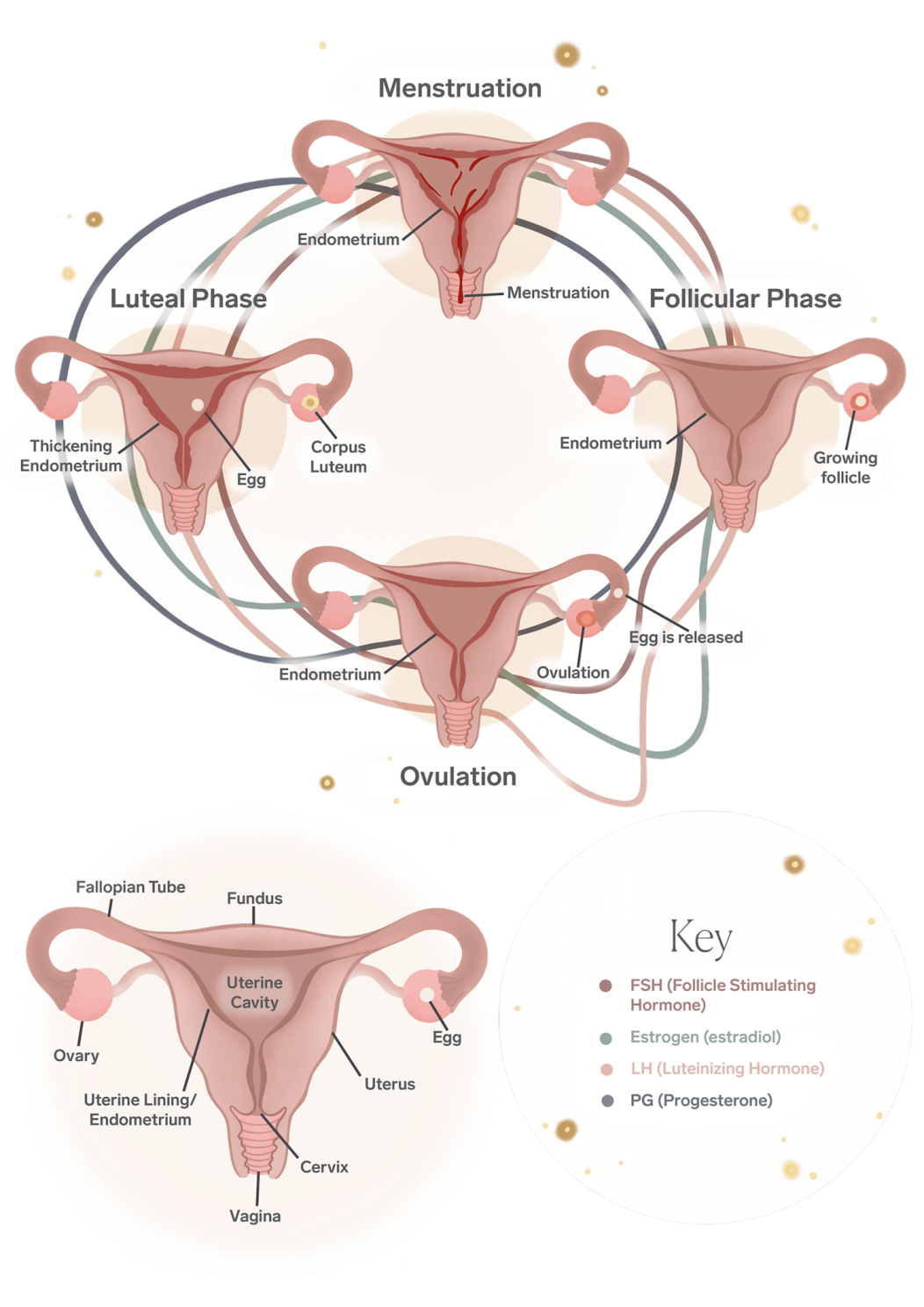The Zoom In: What is Estrogen Hormone?
What the hormone estrogen does during the menstrual cycle.
ICYMI: our bodies contain 50 hormones, but two of the leading hormones that play a role in people with periods are the estrogen hormone and progesterone hormone.
There are four types of estrogen that have different functions at different times: estrone (E1), estradiol (E2), estriol (E3) and estetrol (E4). The first two types are most active in non-pregnant people, whilst the last two types play a more active role during pregnancy.
The most active type of estrogen that is involved in the menstrual cycle is estradiol (E2). At Hummingway, if we’re talking about estrogen, we’re typically referring to estradiol (and if we’re not, we’ll let you know). So estrogen, like progesterone, is a female hormone produced in the ovaries. (Trans women and men also produce estrogen in the testes but in much smaller quantities).

During the follicular phase, estrogen is produced from follicles (sacs that contain your eggs) in the ovaries. Estrogen supports the thickening and growth of the uterus lining. Estrogen hormone levels are at their lowest during menstruation, then levels will begin to rise and just before ovulation, they’ll surge and drop immediately after. They rise again and stay elevated until 2-3 days before menstruation.
High estrogen levels and low estrogen levels have different meanings. If a pregnancy occurs, your estrogen hormone levels will stay high. If a pregnancy doesn’t occur, your estrogen hormone levels will drop, which alongside falling progesterone levels, causes the lining of your uterus to shed.
Another role estrogen levels plays in your menstrual cycle occurs during the follicular phase. This phase is when a follicle is produced by the ovary and released during ovulation. During the ovulation phase, the ovary released an egg from the follicle. This is where estrogen plays a part because this is caused by high estrogen levels sending a signal to the brain to produce luteinizing hormone, triggering the release of the egg.
Estrogen plays a part throughout your life and different estrogen level changes are evident during different phases from regular menstrual cycles to menopause. For example, during perimenopause, which leads to menopause, progesterone levels stop being produced and estrogen levels decrease.
Estrogen level changes, such as your body creating excess estrogen from birth control or estrogen hormone replacement therapy, can also occur. It's important to track your estrogen levels for any irregular changes.
Resources addressed:
Your hormones can be complex and unpredictable. That’s why we’re here, on The Regular, to do what’s long overdue - to demystify what’s going on with our reproductive systems, our hormones and our whole cycle.
We’re here to support your day-to-day queries serving useful content that is uncomplicated and unbiased. No topic is too complicated or too specific for us to address/focus on.


